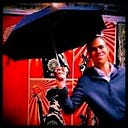https://fineartamerica.com/featured/native-american-circle-of-life-jessica-hallberg.html
Over the last few years, our societies have polarised around divisive issues, be it around Brexit, lockdown and, more recently, the monarchy. Often the tools used to sound out the population reinforce that division, like opinion polls or referendums.
You can almost predict that each side will be reinforcing its arguments and opposition to the other, with no room for discussion. Shortly after Brexit, I got involved in More in Common, an organisation set up shortly after Jo Cox MP’s death by a far-right terrorist. It was aimed at building bridges, and one of the activities was bringing together people who had voted for Brexit and against it to find common ground.
It got me thinking that amidst all the new technology, many of the tools we use are created to find winners in debates…and, therefore, losers too, as opposed to genuinely understanding each other. Of course, we have citizen assemblies or digital platforms for deliberation like Decidim, but what can we learn from our ancestors?
From our older generations, we can find the circle of life created by Native Americans, where people gather in a circle in a similar way as everything in the process of life is equal, and so should everyone’s issues. At the same time, the Western culture brought people together at boardroom tables. The Cabinet of Ministers was named because the Prime Minister wanted to gather his top advisors in a small private room, called a cabinet in Italian.
The Native Americans also invented the burden basket, where everyone could leave their troubles at the door before entering a discussion. There is also the talking stick, where people can ask to talk and have the bar to empower them rather than only one person having the post or microphone.
The open space method was accidentally created by someone who had planned a perfect agenda but found people had more meaningful discussions during coffee breaks. He made way for people to decide what topics to discuss and set up their sessions so anyone could come and go as they pleased — the law of two feet. These have now been adapted to the modern age into bar camps or unconferences.
The world cafe method allows people to share their views on a range of subjects and mix up who they share them with, so everyone has time to have their say with different groups.
Future search is a similar mechanism where people share the past, present and future around the issues to bring all the elephants in the room out of the closet and debate conflicting problems healthily. They are then asked to identify ideal lots and find and then confirm the common ground they have agreed upon as a way to move forward.
What methods do you use to help people find common ground?
What have you learnt?
What can we learn from other sectors and cultures to get people to overcome differences and take action together?
